How ‘Andor’ Broke Star Wars Rules to Reinvent Sci-Fi TV
- Oops!Something went wrong.Please try again later.
- Oops!Something went wrong.Please try again later.
- Oops!Something went wrong.Please try again later.
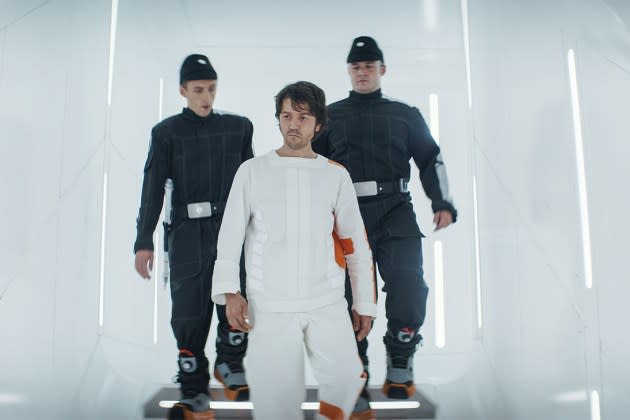
Star Wars may be a wild sci-fi fantasy galaxy of aliens, pirates and space wizards, but it actually has a lot of secret rules. For instance: Paper does not exist. There are no wheels. Doors always slide open — no hinges. And windows can be many shapes, but not square.
So writer Tony Gilroy was surprised when Lucasfilm proposed that he make a radically different kind of Star Wars series where he’d enjoy plenty of creative latitude: a prequel to Rogue One, the 2016 Star Wars film Gilroy helped improve with a script rewrite and reshoots. “The original mandate was: ‘Can you open a new lane for us? Can you find us a new audience?'” recalls Gilroy (in an interview conducted before the WGA strike). “‘If we back your play and use the down payment of the hard-core Star Wars community, can you make something, take it seriously, and make a new lane that we might build all kinds of new things from?'”
More from The Hollywood Reporter
San Sebastian Festival to Screen 'May December,' 'Zone of Interest,' 'Past Lives' in Best-of Sidebar
David Spade Says He Refused to Swap Roles With David Bowie in 'SNL' Sketch
Sandra Hüller Stars in Trailer for Cannes Palme d'Or Winner 'Anatomy of a Fall'
The idea wasn’t to shatter the rules of Star Wars, but to find an entirely new vibe and scene that felt different within the franchise’s existing, iconic aesthetic. “And in that, we were a resounding success,” declares Gilroy immodestly yet correctly, given that the resulting series, Andor, has received near-universal acclaim among critics and fans for its brand of grounded, grown-up Star Wars. And there were two sequences during the drama’s first of two seasons that particularly stood out: a rousing escape from a soul-crushing prison on Narkina 5 and a nail-biting heist operation on the planet Aldhani.
The Prison
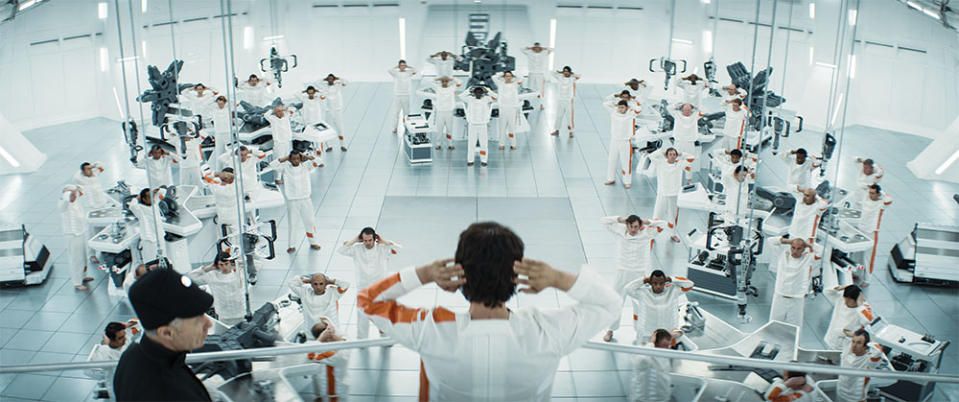
“I’m not obsessed with dams — just for the record,” production designer Luke Hull says.
Hull is referring to the fact that both his Aldhani base and his showstopping concept for Andor’s prison on Narkina 5 coincidentally use hydroelectric power as part of their design. Hull isn’t a Star Wars veteran — his last big gig was on HBO’s Chernobyl — but Gilroy calls him his “primary narrative collaborator” on the show.
“He’s the person I spend the most time talking to because everything we do has to be designed right,” Gilroy says. “He’ll be the last dog to die.”
Narkina 5 is an ingenious nightmare: a factory prison in the middle of an ocean where thousands of barefoot men in paper uniforms (paper clothing is apparently allowed) endlessly build mysterious Imperial widgets. Across a three-episode arc, the show’s protagonist, Cassian Andor (Diego Luna), is imprisoned, toils away in desperation and then leads a breakout with the help of his work crew leader, Kino Loy (Andy Serkis).
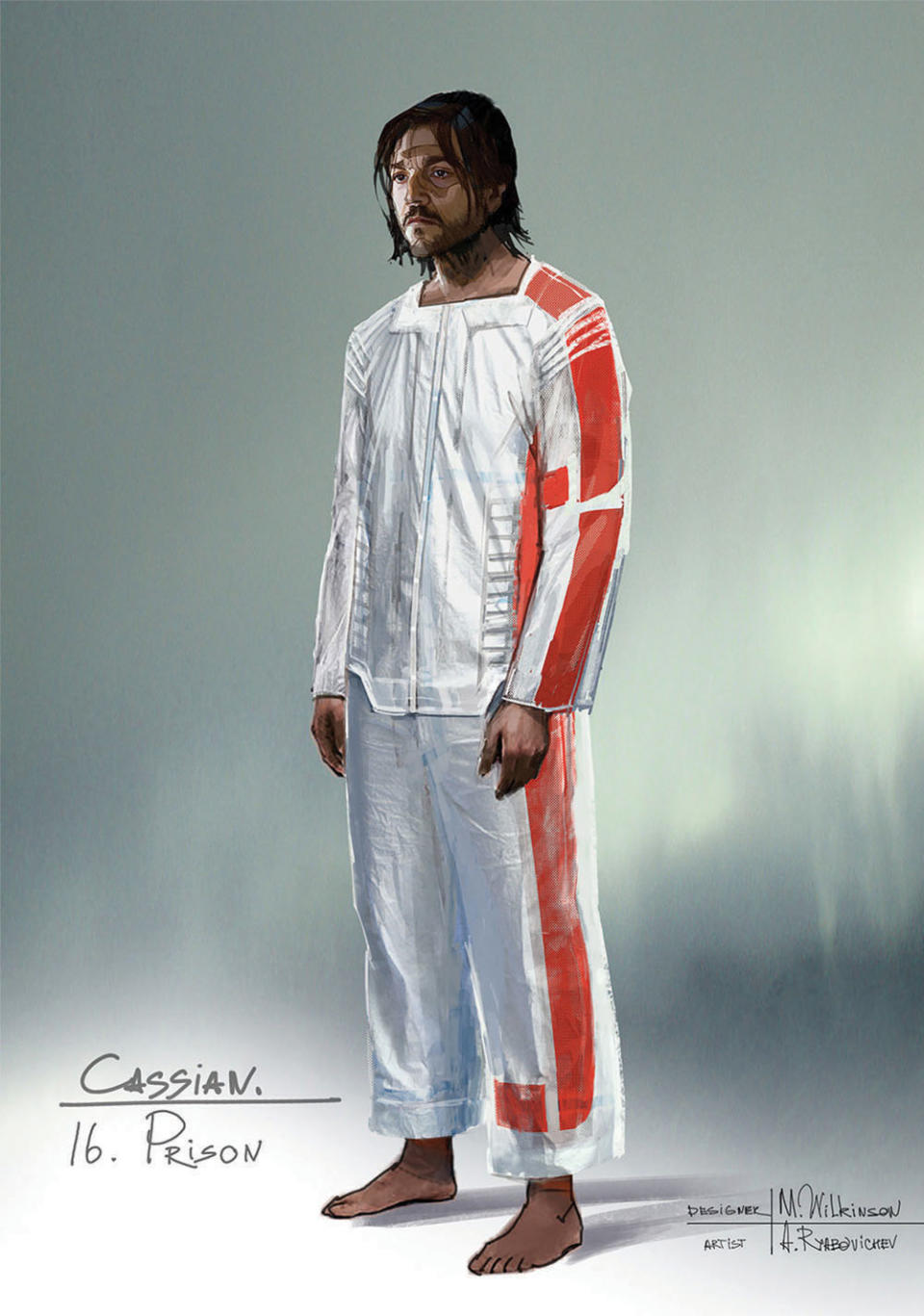
From the start, the Andor team considered the prison arc daunting. They had to design, from the ground up, a wholly original and sprawling sci-fi incarceration system that fit within the Star Wars world and wouldn’t break the bank. “There are so many epic prison movies,” Gilroy says, referencing classics like Escape From Alcatraz and The Shawshank Redemption. “And I was like: We cannot do a prison if we can’t do a better prison — something fresh.”
Given that Narkina 5 is a work camp, the standard move would be to draw inspiration from something that’s historically familiar. “The obvious direction was something grungy like a Russian prison or gulag,” Hull says. “But what if it was more like a lab? If it was more like a clean room? And the prisoners are the expendable product in the machine? That’s actually more creepy.”
Imperial locations tend to be black and gray. “They’re the Navy,” Hull points out. A New Hope showed the Death Star’s detention level, which was likewise black and sinister. But black and gray are also monochromatic. So how about all-white instead? “Whether it’s all black or all white, you’ll know it’s an Imperial environment,” Hull says.
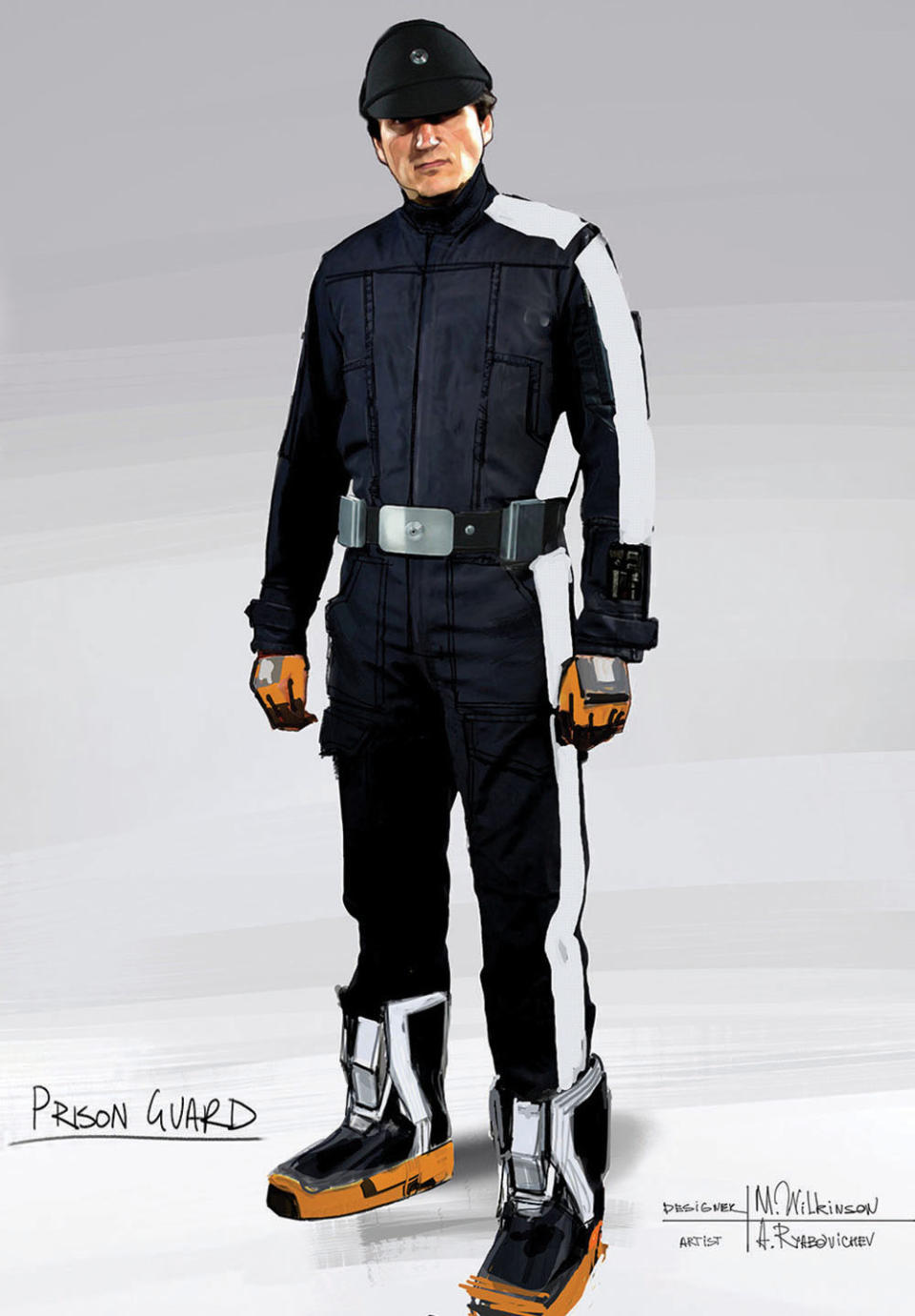
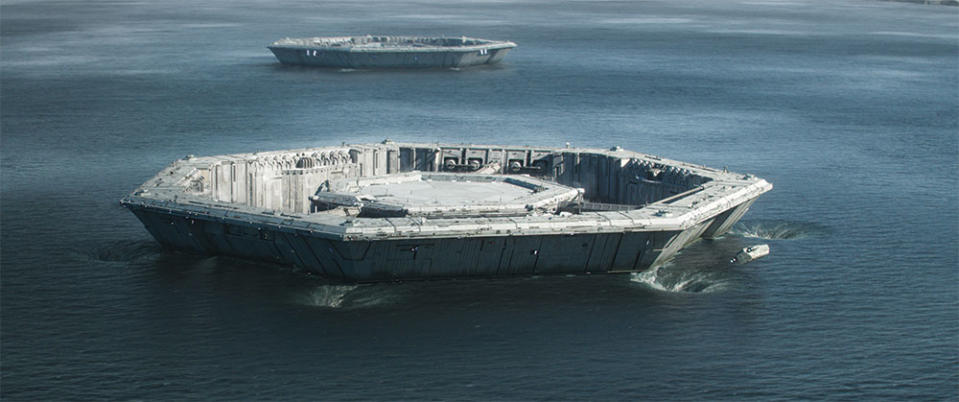
As for how a Star Wars prison should function, Gilroy says their first useful idea was “no bars.” He continues, “Then it had to be something where you don’t need to have 8 million guards. Then somebody said ‘electric floors’ and it was like, ‘Oh my God!’ ”
The team got to work designing a perfect, inescapable mousetrap, and then had to figure out how to reverse-engineer what they created to give Cassian a way to get out, all while playing fair with the audience. Every line of dialogue in Cassian’s prison orientation became crucial to his eventual escape.
“It’s such a strong and interesting concept and such a wonderful statement,” Luna says. “It’s a prison that is all about being productive to an economic system, where you have to be healthy and pristine and strong. And you need to have a little [false] hope that you can get out one day. It makes you reflect on the world we live in.”
One final design element, however, didn’t quite meet Hull’s high standards: Cassian’s cell toilet. “The Star Wars Toilet still keeps me up at night,” Hull sighs. “We probably could have done a bit more work to make it more interesting.”
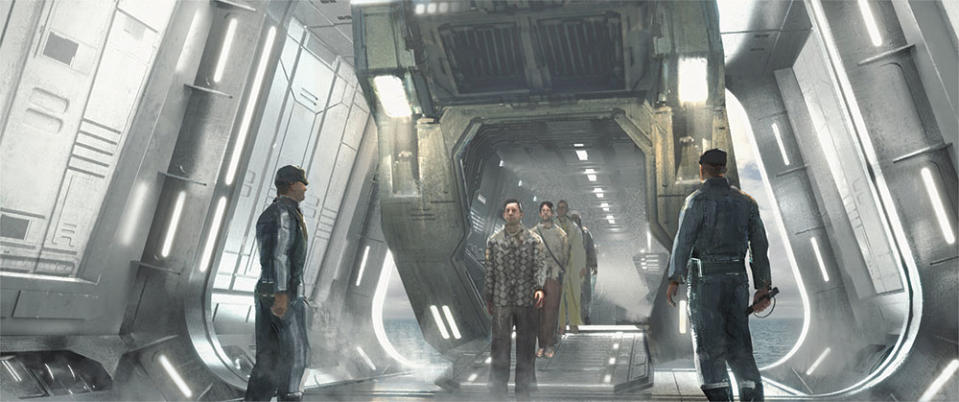
For the crucial character of Kino Loy, Gilroy wanted Serkis after seeing him play an arms dealer in Black Panther, but says the actor kept him dangling for quite a while. Serkis was wary, he says, about returning to Star Wars after playing Supreme Leader Snoke in the sequel movies. “There was such confusion about Snoke and Snoke theories, I just thought people are going to flip out and wonder what the hell is going on and assume there’s some sort of link there,” Serkis says. “I thought, ‘This is a minefield.’ ”
Serkis was turned around by Gilroy’s script, which also gave him the opportunity to present a very different physical character to a mass audience: himself. The British actor is best known for his motion-capture work in The Lord of the Rings and the Planet of the Apes reboot franchise. Even in Panther, he was buried under an array of scars and tattoos and sported a South African accent. For Andor, he’d be stripped to his everyday self and in the same costume as every other prisoner. But Serkis says he didn’t feel particularly naked on set.
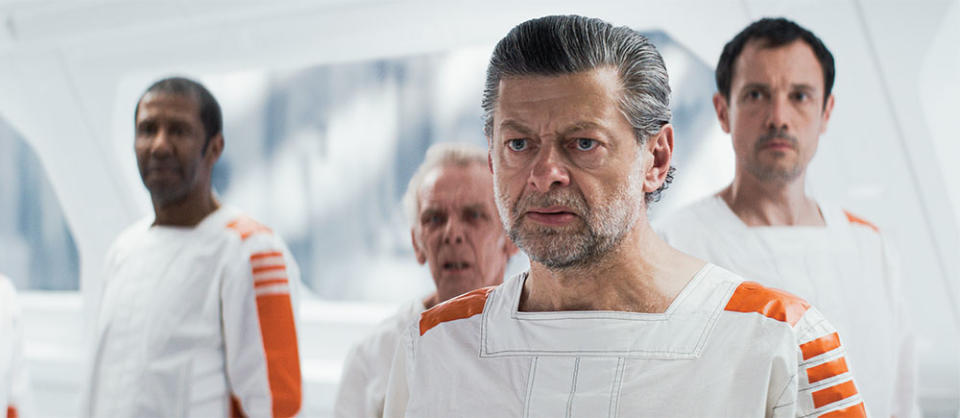
“You feel plenty naked in a motion-capture suit, too,” he says. “A character is a character and it doesn’t matter how you manifest that. It’s about who that person is or what that person is or what they represent.”
Serkis did construct his own backstory for Kino Loy to help him get his head around the character. He decided Loy was “someone who had a family and was a firebrand union shop steward that would stand up for workers’ rights in a normal situation,” but was beaten into submission by Narkina 5.
Serkis got to deliver arguably the most viral line of the show, after Cassian’s repeated attempts to convince Loy to attempt a breakout by asking how many guards are on each floor. In the last line of the ninth episode, Loy finally answers: “Never more than 12.” Gilroy points out that what’s effective about the line is how non-showy it is. “The really great lines are ones that feel like they’re organically there and you love them, but you don’t feel like the writer is there too,” he says. “That one was causal and strong, but no, I was not prepared for the reaction [by fans].”
The prison rebellion calcifies Cassian’s resistance to the Empire and shows he can be a leader, but not before Luna, Serkis and the rest of the cast started to feel like they were imprisoned themselves.
“The desensitization of wearing a paper suit and walking in bare feet was the most strange thing about the process,” Serkis says. “Week in, week out, everybody looking like a carbon copy of yourself, you feel like you’ve lost your identity. And everything about that set was hostile in its clinicalness. It did strange things to your head, like it was designed to do.”
That the Narkina 5 sequences were filmed at the end of Andor‘s 10-month shoot helped add to the actors’ weariness. “Every day, going into those white walls, dressed in that uniform, made you feel like just another number,” Luna says. “The prison metaphorically became a different thing for each actor — everyone found a way to hate the prison.”
Appropriately enough, the final scene of the prison break, when the prisoners jump from a platform into the ocean, was shot on the very last day of the season’s filming. “That was the last shot we did,” Luna says.
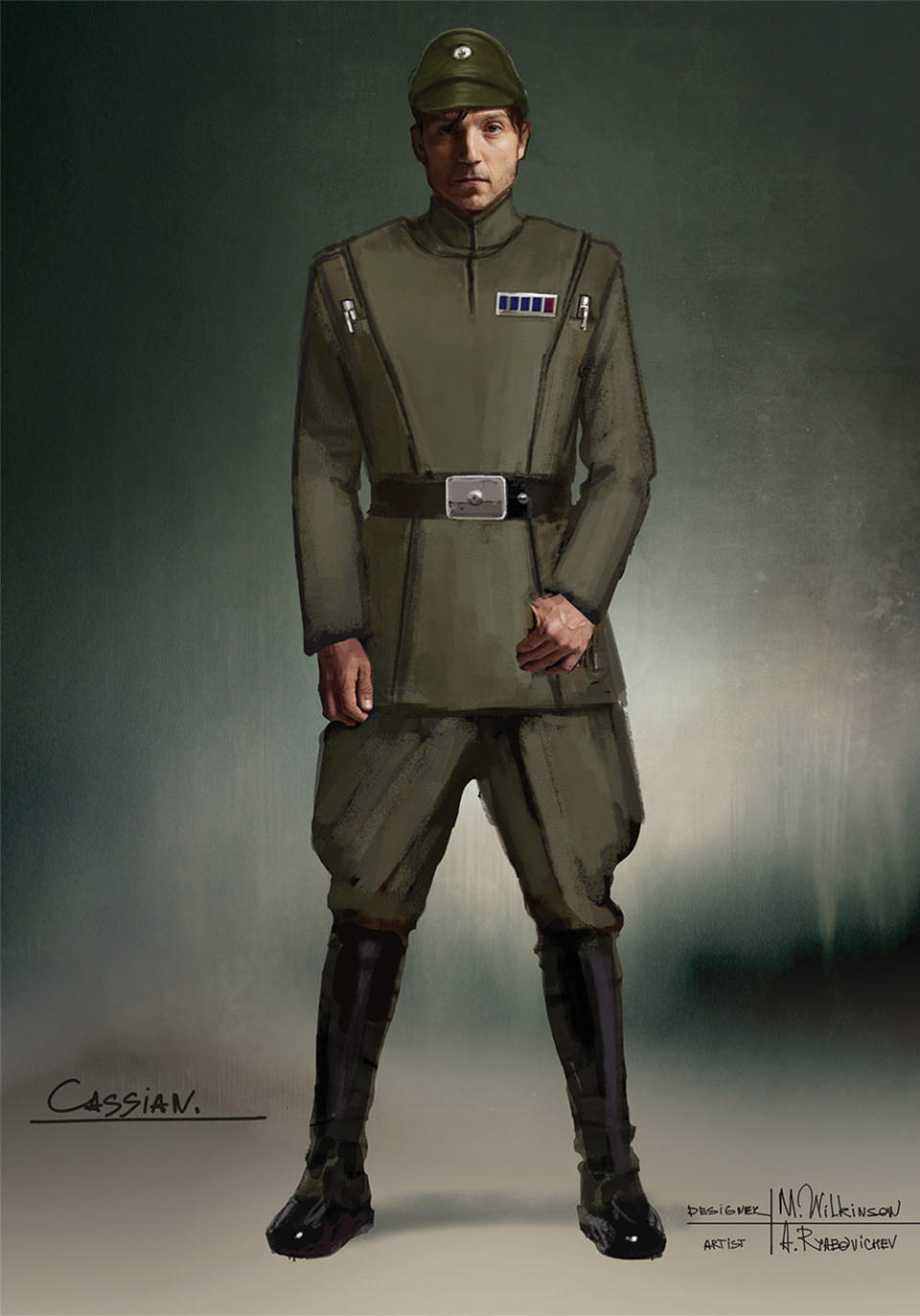
The Heist
“We were trying to avoid deserts,” recalls Hull. Indeed, like Anakin Skywalker, Star Wars fans have grown weary of staring at sand, which made the murky green hills of Aldhani (shot on location in Scotland) a rather refreshing choice.
The idea of sneaking into an Imperial base, however, is a well-worn trope. The usual arc is: The good guys go in, they’re discovered and they pew-pew-pew their way out. Broadly speaking, Andor does the same thing, but with many striking twists.
The team is led by freedom fighter Vel Sartha (Faye Marsay). She and her partner, Cinta Kaz (Varada Sethu), are the first significant queer characters in filmic Star Wars, but their identity isn’t just a way to burnish Disney+’s inclusion bona fides. “It wasn’t a novelty — ‘Here are the queer characters.’ It just normalized the normal,” says Marsay.
Given that the character is so groundbreaking, one would expect Andor‘s writers to portray Sartha as a flawless and fearless example of hyper-competence. But when the time comes for her to launch the attack, she freezes with indecision and terror. The move doesn’t weaken the character, but makes the mission seem perilous and her eventual command to “Go!” all the more brave. “The thing that was most interesting was her vulnerability and insecurity. She’s not just one-note,” says Marsay.
Once inside the base, the usual firefight mayhem is delayed as long as possible as the audience realizes the rebels are desperately trying to avoid hurting anybody. None of the Imperials are wearing helmets like the saga’s traditional Stormtroopers, which prevents them from becoming anonymous blaster fodder. And the rebels’ morality is flipped when one of them holds a gun to a child’s head and a “bad guy” pleads to let the kid go — a reversal of the action-movie cliché where a child is held hostage by a villain. “We wanted to make every single person have their own reality and to empathize with everybody here,” says Gilroy.
Generating all this stand-off tension required a bit of a cheat. One of the first weapons introduced in Star Wars is a stun gun used to harmlessly subdue Princess Leia in A New Hope. It’s a device Andor conveniently left off the stage entirely. “We want it to be hard; [having only lethal weapons] makes their decisions more difficult,” says executive producer Sanne Wohlenberg.
After fighting breaks out and the team makes its escape, the rebels’ sympathetic, manifesto-writing idealist Karis Nemik (Alex Lawther) is killed — but not by the enemy. He’s instead accidentally crushed to death by stolen cargo. “I try to put a lot of error in things,” Gilroy explains. “It’s what goes wrong that makes things really interesting. In reality, very few things work the way they’re supposed to work.”
Once the group is safe, there’s a final shock: One of the rebels, Arvel Skeen (Ebon Moss-Bachrach), tempts Cassian to betray the others. Cassian abruptly shoots him, a move that surprised the audience and even left some confused. There was nothing clear-cut or explained about Cassian’s decision, yet a complicated internal logic existed that felt true to the character.
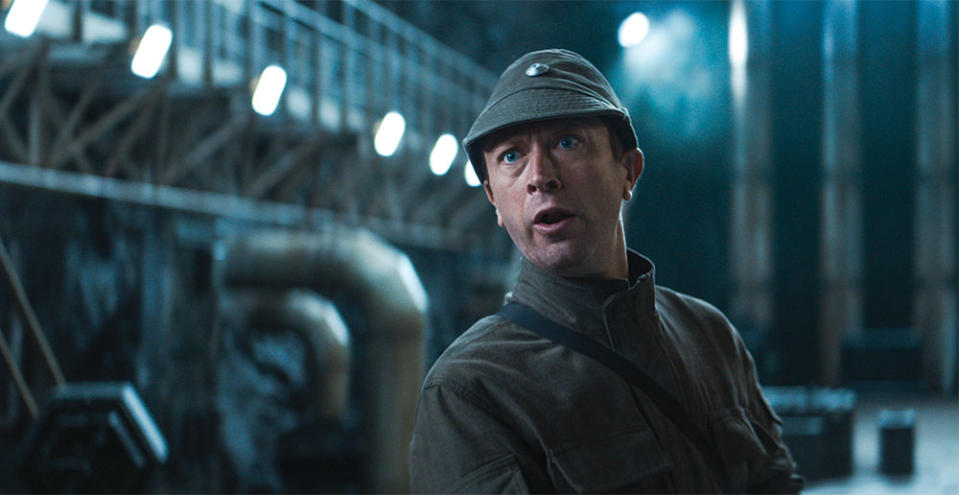
Gilroy breaks down exactly what happened: “Cassian’s doing a very rapid mathematical algorithm in his mind about what [betraying the others] would mean and what the risk would be and what his future would be. I’m sure that there’s a moment where he is considering it. Cassian just wants to get his cut and get out. He is not a revolutionary at this point, but he’s seen their commitment and there is some respect and interest [in the rebellion] taking effect. Also, how could he trust this son of a bitch? If he’s willing to do that to them, what else is he going to do? He’s dangerous.”
The scene naturally made Star Wars fans think of the classic moment when Han Solo kills a threatening Greedo in A New Hope — a moment that frustrated fans after creator George Lucas re-edited it in the Special Edition to have Greedo fire first. Gilroy, naturally, doesn’t want fans to think his Cassian beat was some sort of comment on the other scene and almost bristles at the suggestion.
“I know what that is,” he says when “Han shoots first” is mentioned. “But no. That’s not on my ledger while I’m working.”
Andor is now in production on season two, which will consist of another 12 episodes. While the first season played around with doing Star Wars versions of popular genre tropes (a heist, a prison break, a local uprising), the second season is a bit different. “It’s not as clearly delineated in terms of genres, but it’s more clearly delineated in that each block of three episodes will be separated by a yearlong gap,” Gilroy says. “So they’re really stand-alone, and in many cases take place over one, two or three days.”
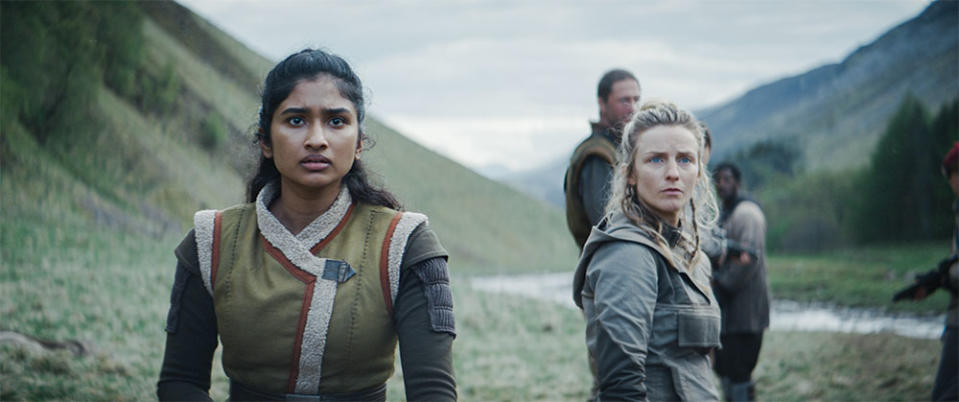
Looking back, Gilroy sees Andor as a minor miracle. Given its steep cost (estimated at $250 million), franchise-expanding tone, and intensive mix of practical and special effects, it probably never would have been greenlit earlier — and probably wouldn’t be ordered now, either.
“We got lucky making this during the gold rush a few years ago. A lot of people now have cold feet, and you can’t do this show inexpensively,” says Gilroy. “I’m just so relieved at the reaction because we were making this huge, obscure thing and we knew it was crazy. Like, ‘Is this too much? Have we gone too far?’ There were no focus groups or test audiences. Now it will be good if we can stick the landing and go out strong.”
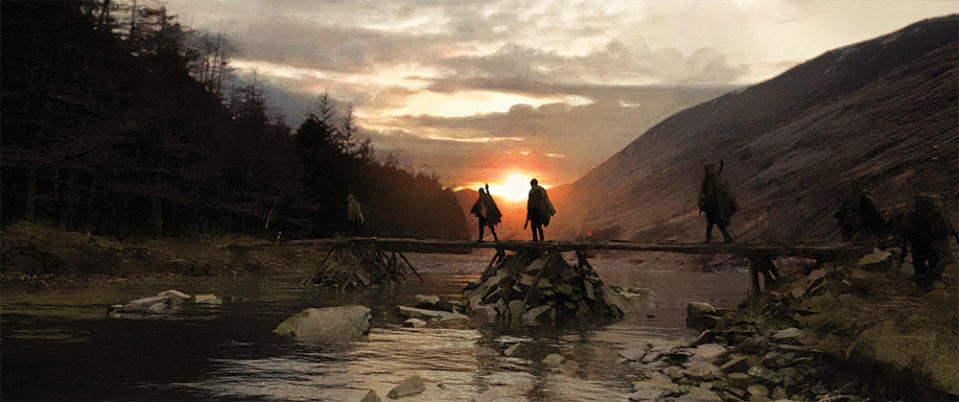
This story first appeared in the June 7 issue of The Hollywood Reporter magazine. Click here to subscribe.
Best of The Hollywood Reporter
From 'Fuller House' to 'And Just Like That': 30 Shows That Prove TV Reboot Culture Is Alive and Well
"This Was One Hot Mess": Lisa Vanderpump, Keke Palmer and the THR Reality Roundtable
Tom Holland Breaks Free: Talking Zendaya, ‘The Crowded Room’ and the Future of Spider-Man

